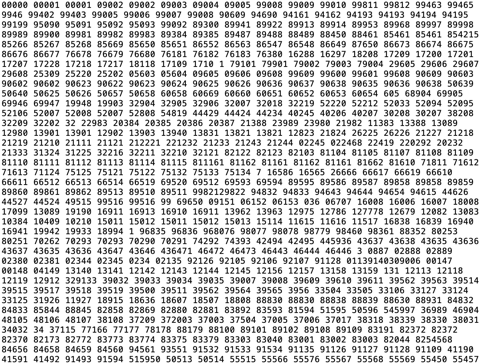In an effort to better understand artificial intelligence I started experimenting with artificial neural networks and text generators. I decided to teach an AI to count.
A seemingly simple task, which turned out to be surprisingly difficult.
Why teach counting? Because learning to count is an important milestone for education and development in most cultures around the world. Learning to count is a child’s very first step in math and forms the most basic idea of the discipline.
So following that, teaching an AI to count could be the right starting point. The following are a selection of experiments with different approaches I undertook:
*
→ Experiment 1:
Teach the sequence of numbers from 00000 to 99999 to an AI.
Ask the AI to count up starting from an input given.
Note: If the AI get’s a basic understanding of counting it should be able to count beyond 99999.
Input:
00000
Output:

*
→ Experiment 2:
Use a pre-trained unsupervised transformer language model (GPT-2) and ask it to count up.
Input:
What number follows 4?
Output:
The number is “pretty easy” but that number can change.
*
→ Experiment 3:
Show a video that increments 3 numbers from ‘000’ to ‘009’ to an artificial neural network.
The aim of the AI is to learn how numbers and counting up ‘looks like’.
Ask the AI to make a video counting up.
Input:
Output:
*
Dawid Liftinger, Alumni since January 2020, describes some of his experiments concerning the seemingly simple task of teaching an AI to count. In his time at the KHM Dawid was a regular at our experimental informatics lab of exmedia, working and experimenting with light, sound, rapid prototyping technologies, AI … And bridging with his interests and topics installative and performative aspects, in collaboration with others or in solo projects.
The posts titled “in progress” present different states of projects, work processes or experiments of students of exMedia, showing some of the work happening in between the first concept and the final stage.